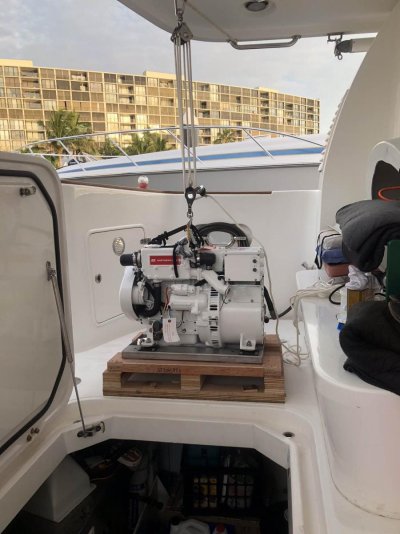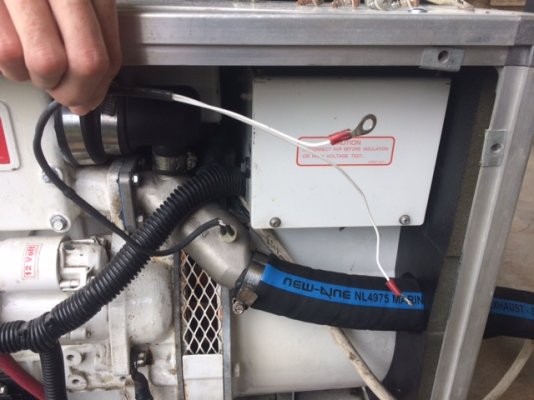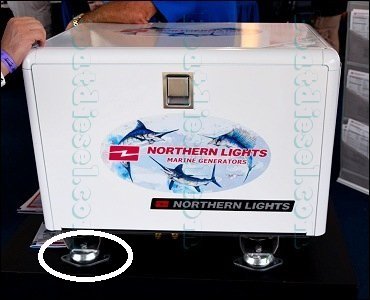grahamdouglass
Senior Member
- Joined
- Nov 29, 2012
- Messages
- 413
- Location
- Canada
- Vessel Name
- Summer Wind 1
- Vessel Make
- Marine Trader 41
I bought a NL 5kw Genset, with a sound shield. I'm replaceing a well used 1979 Onan 3kw MDJA. It will go in a different spot in the lazertte because of the larger footprint of the soundshield.
Question. What is the most effective way to mitigate structural noise transmission? The lazertte has a "floor" made up of 3/8" Plywood painted sheets placed on top of a 2"x2" stringer structure. The fiberglass hull is heavily laid up 1981 era fiberglass.
The generator will be placed on a 3/4" plywood base that will be screwed to the plywood floor, which intern will be screwed to the stringers.
Should any thing be placed between the plywood and stringers or plywood basse and plywood floor to reduce noise transferance?
Question. What is the most effective way to mitigate structural noise transmission? The lazertte has a "floor" made up of 3/8" Plywood painted sheets placed on top of a 2"x2" stringer structure. The fiberglass hull is heavily laid up 1981 era fiberglass.
The generator will be placed on a 3/4" plywood base that will be screwed to the plywood floor, which intern will be screwed to the stringers.
Should any thing be placed between the plywood and stringers or plywood basse and plywood floor to reduce noise transferance?








